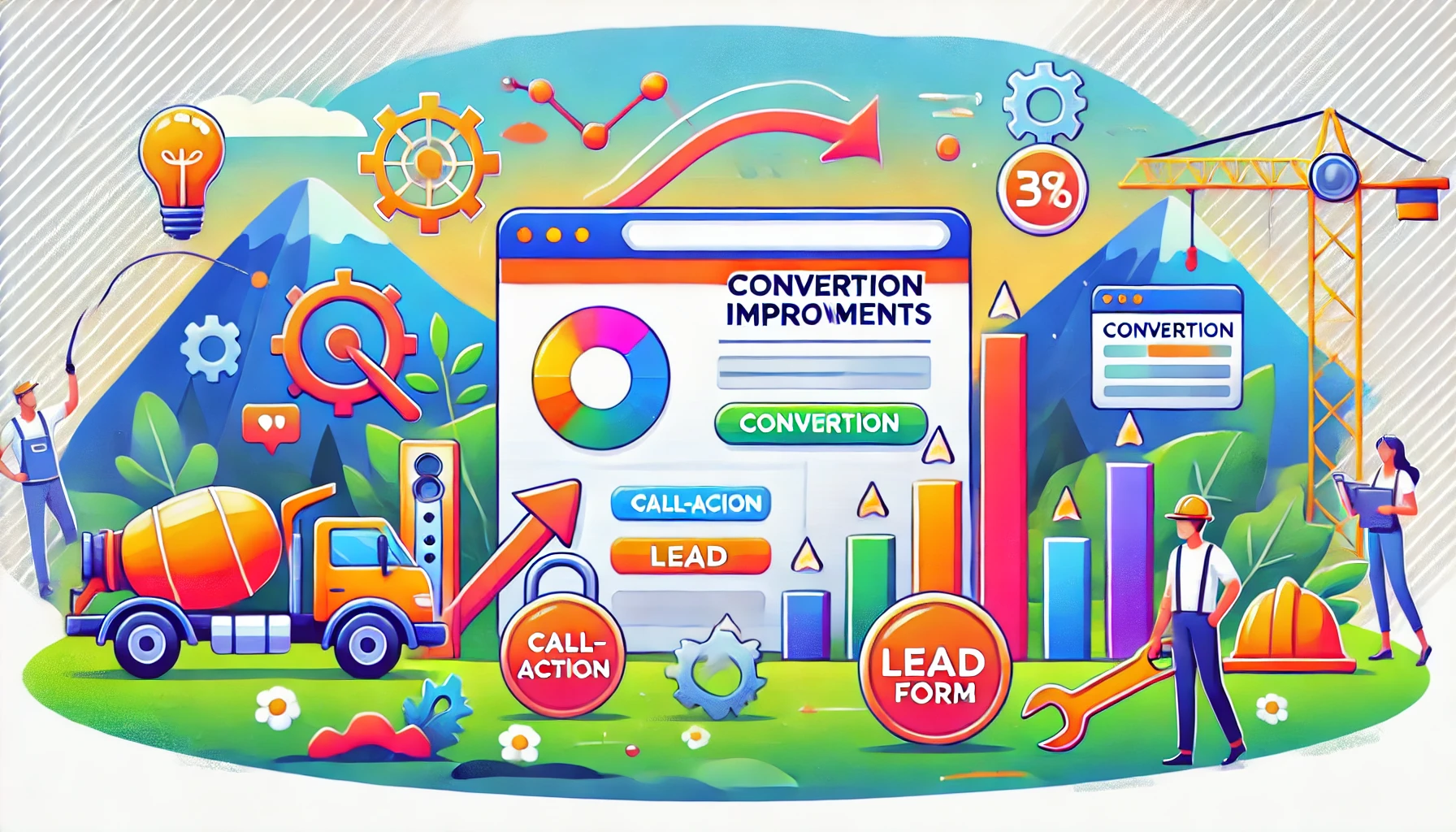Your contractor website serves as one of the most important tools for generating leads and converting visitors into clients. However, if your website isn’t optimized for conversions, you could be losing potential business. Improving your website’s conversion rate involves making small changes that encourage visitors to take action—whether that’s filling out a contact form, requesting a quote, or scheduling a consultation. In this post, we’ll explore actionable tips to help contractors improve their website’s conversion rate and generate more leads.
1. Simplify Your Website’s Navigation
A clear, easy-to-navigate website is essential for guiding visitors toward the actions you want them to take. If homeowners can’t quickly find the information they need, they’re likely to leave your site without contacting you. Here’s how to optimize your navigation:
- Streamline Your Menu: Limit the number of menu items to only the most important pages, such as “Services,” “About Us,” and “Contact.” Too many options can overwhelm visitors and lead to confusion.
- Use Clear Labels: Make sure your menu items have clear, descriptive labels. Avoid vague terms like “What We Do” and opt for more specific titles like “Roofing Services” or “Home Renovations.”
- Add a Sticky Header: Implement a sticky header that stays visible as users scroll. This keeps important links like contact details or service categories accessible at all times.
2. Improve Your Calls to Action (CTAs)
A well-designed call to action (CTA) is key to converting website visitors into leads. CTAs prompt visitors to take the next step—whether it’s filling out a form or requesting a quote. To improve your CTAs:
- Make CTAs Stand Out: Use contrasting colors for your CTA buttons to draw attention. The text on your buttons should be clear and action-oriented, like “Get a Free Estimate” or “Schedule a Consultation.”
- Place CTAs Strategically: Ensure that your CTA buttons are prominently placed throughout your site, especially on key pages like your homepage, services pages, and blog posts. Make it easy for visitors to take action without having to search for a button.
- Create a Sense of Urgency: Encourage immediate action by adding urgency to your CTAs. Phrases like “Limited Time Offer” or “Contact Us Today” can motivate visitors to take action before they leave your site.
3. Optimize Lead Forms for Simplicity
Your lead generation forms play a critical role in converting visitors into clients. However, if your forms are too long or complicated, visitors may abandon them before submitting. Here’s how to simplify your forms for better conversions:
- Limit the Number of Fields: Ask for only the most essential information, such as name, phone number, and project details. Too many fields can discourage visitors from completing the form.
- Use Auto-Fill Features: Auto-fill options, especially for contact details, make it easier for visitors to complete forms quickly, improving the likelihood of submission.
- Place Forms Above the Fold: Ensure that your lead forms are visible without requiring visitors to scroll. Placing forms above the fold (the upper part of your webpage) increases their visibility and the chance of conversion.
4. Enhance Your Website’s Load Speed
Website load speed directly impacts both user experience and conversion rates. If your site takes too long to load, visitors may leave before they even have a chance to engage with your content. Here’s how to improve your site’s speed:
- Optimize Images: Large, uncompressed images can slow down your website. Use image optimization tools to compress images without losing quality.
- Use Browser Caching: Browser caching allows visitors to store certain elements of your website in their browser, reducing load time for future visits.
- Minimize HTTP Requests: Reduce the number of HTTP requests by limiting the use of external scripts and plugins. This will speed up your site’s performance.
5. Build Trust with Social Proof
Social proof—such as testimonials, reviews, and case studies—helps build trust with potential clients. By showcasing the positive experiences of past customers, you make it easier for new visitors to trust your business and take action. Here’s how to use social proof effectively:
- Feature Testimonials on Key Pages: Place client testimonials on your homepage, services pages, and contact page. Include photos or videos of the projects when possible to add authenticity.
- Showcase Reviews and Ratings: Highlight your best reviews from platforms like Google or Yelp, and make sure your ratings are easily visible.
- Create Case Studies: Detailed case studies that showcase your process, results, and client satisfaction can provide valuable social proof and help convert new leads.
6. Use Live Chat or Chatbots
Adding live chat or chatbot functionality to your website allows visitors to get their questions answered quickly, which can improve conversions. Here’s why live chat works:
- Immediate Assistance: Homeowners may have specific questions before contacting you. A live chat option gives them immediate access to answers, keeping them engaged on your site.
- Lead Capture: Many live chat tools allow you to capture visitor information, even if they don’t fill out a lead form. This provides you with additional ways to follow up with potential clients.
Conclusion
Improving your contractor website’s conversion rate doesn’t have to be complicated. By simplifying navigation, optimizing CTAs and forms, improving load speed, and using social proof, you can create a more engaging user experience that encourages visitors to take action. Implement these strategies today and start converting more of your website traffic into high-quality leads.
